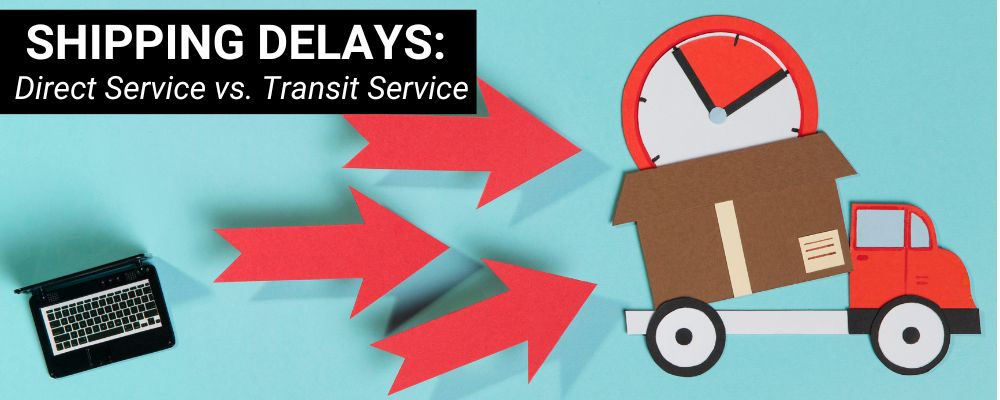
In today’s globalized economy, the efficiency of shipping goods is crucial for businesses. However, with pandemic-related delays and a lack of capacity, ocean freight from Asia to the US experienced significant challenges in recent times. As a result, it becomes essential for shippers, consignees, or freight forwarders to understand the different options available and make informed decisions that can help avoid shipment delays.
In this article, we will explore two types of shipping services – direct service and transit service – and provide valuable tips on mitigating potential delays.
Understanding Cargo Vessel Routes:
To comprehend how cargo vessels travel through the Pacific Ocean from Asia to the USA, let’s take a closer look at common ocean shipping routes. While many assume that vessels go directly across the Pacific Ocean or via canals such as Panama Canal or Suez Canal, there are specific routes employed by carriers.
Direct Service:
With direct service, your goods only travel on one vessel throughout their entire voyage. Although this vessel may make multiple stops at different ports to unload or load cargo along its route, your cargo remains on board without being transferred.
For instance, consider a typical routing from China to US West Coast. The vessel route starts at Shanghai port then proceeds through Yantian Port and Kaohsiung Port before reaching Los Angeles Port in California.
Most often than not, containers are unloaded at Los Angeles Port before heading north towards Oakland Port where remaining cargo is offloaded. Afterward, the vessel returns back to China while your cargo maintains its position within the same vessel throughout its journey – making it a direct sea service.
Transit Service:
On the other hand, transit service involves your cargo traveling via more than one vessel before reaching its final destination. It begins at the port of origin and transits through major ports of call, where it is loaded onto a mother vessel to continue its journey.
For example, let’s consider a transit route from Asia to the USA. The starting port on this route is Qingdao port in China. The vessel makes stops at Ningbo Port in China and Busan Port in Korea, possibly unloading some containers along the way. A mother vessel then picks up these containers and continues its westbound journey towards Los Angeles Port.
However, during peak seasons or congested periods, transit ports like Singapore, Malaysia, or Busan may experience delays due to high volumes of cargo. Such delays can result in your cargo being rolled over for a minimum of one week until another vessel with capacity becomes available. This delay could extend up to three weeks or even longer if congestion reaches its peak – causing significant disruptions to your supply chain.
Mitigating Shipping Delays:
While freight forwarders have limited control over major vessel or terminal operations that contribute to shipping delays, here are some helpful tips that can mitigate potential setbacks:
1. Book Direct Service: If costs permit and time sensitivity is crucial for your business operations, prioritize direct service when booking with your freight forwarder or shipping agent.
2. Check Shipping/Transit Times: Before making any decisions regarding carriers and services, carefully examine the shipping or transit times offered by various options available to you. Ensure they align with your production schedules and deadlines.
3. Plan Ahead: To avoid being caught in backups caused by unforeseen circumstances such as weather-related events or congestion peaks at transit ports, plan for production adequately and ship goods ahead of time whenever possible.
4. Stay Informed: Keeping abreast of freight market news is vital for understanding industry trends and potential obstacles that might impact shipments’ timelines significantly.








